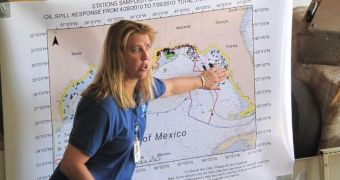Researchers with governmental agencies in the United States are continuing to keep an eye out for contaminants that may have made their way into marine animals living in the Gulf of Mexico. They want to reassure people that fish and other seafoods are now safe to eat.
The ecosystem was severely affected by the massive oil spill that began on April 20-22, 2010, south of the Louisiana coastline. At that time, the BP/Deepwater Horizon semi-submersible drilling rig blew up, and subsequently sunk in the deep ocean water below.
The ensuing oil spill lasted for months, and released around 4,900,000 barrels (206 million US gallons) of crude oil and natural gas into the Gulf. Authorities immediately closed down the affected areas, to ensure that no contaminated marine animals make their way on land.
In the following months, the US National Oceanic and Atmospheric Administration (NOAA), in collaboration with the Environmental Protection Agency (EPA) and the Food and Drug Administration (FDA), conducted regular studies of the area.
They sampled the waters, and analyzed fish and shrimp samples in detail. As the contamination subsided, authorities reopened more and more areas to fishing. However, the efforts to ensure that safety of the food have never been completely abandoned.
In fact, NOAA announced yesterday, March 25, these retesting procedures will continue for a long time, until experts are convinced that all of the released oil plumes disappear.
“Gulf seafood is consistently passing FDA’s safety tests by a wide margin. We are continuing to test, and we are making the data available to the public, so they can make fully informed purchasing decisions,” says Eric Schwaab,
The expert is the assistant NOAA administrator in charge of the agency's Fisheries Service.
“The system set up to keep tainted seafood out of circulation has worked. Consumers should know that Gulf seafood is extensively tested and is safe to eat,” adds the acting deputy director of the FDA Center for Food Safety and Applied Nutrition, Don Kraemer.
Things have progress considerably since June 2, 2010, when the area of the Gulf closed for fishing reached its maximum extent – 37 percent of federal waters, or roughly 88,522 square miles.
Today, only1,041 square miles immediately surrounding the spill site remains closed to commercial and recreational fishing. Authorities are keeping this region under constant surveillance.
“Increased testing, and communicating about the increased testing, is vital for Gulf fishermen and the Gulf economy, and for consumers,” explains the president of the Gulf of Mexico Reef Fish Shareholders Alliance, David Krebs.
“It's important to show that our seafood has been proven safe time and time again,” he concludes.

 14 DAY TRIAL //
14 DAY TRIAL //